Ammania senegalensis
Scientific name: Ammania senegalensis
Family: Lythraceae
Maximum size reached under cultivation: 30 - 45 cm (11.81 - 17.72 inch)
014
Recommended pH range: 6.5 - 7
Recommended water hardness: 4 - 12°dGH (71.43 - 214.29ppm)
0°C 32°F30°C 86°F
Recommended temperature range: 20 - 26 °C (68 - 78.8°F)
Preferred propagation method: Cuttings
Native to: Africa
Growth rate: Slow
Recommended substrate: Fine gravel
Lighting requirements: Bright
Ideal placement in tank: Background
Common Names
Copper Leaf Ammania
🌍 Origin
Ammania senegalensis is native to West Africa, particularly in regions such as Senegal and Mali. It naturally inhabits wetlands, marshes, and riverbanks, where it adapts to both submerged and emersed growth. Its hardiness and bold coloration make it popular in aquariums and paludariums worldwide.
🔎 Quick Overview
- 🌊 Ideal For: Aquariums, paludariums
- 🧑🌾 Difficulty Level: Medium to Difficult
- 💨 CO2 Requirements: Strongly recommended for submerged growth
🌱 Growing Conditions
Ammania senegalensis thrives in high light conditions and benefits from a nutrient-rich substrate. Although it can grow both submerged and emersed, the plant develops stronger stems and richer copper-red tones when grown under bright lighting. Suboptimal lighting results in leaf browning, slower growth, and color loss.
Optimal growth occurs in water with a pH of 6.5–7.0 and moderate hardness (4–12 dGH). Weekly water changes help maintain clean water and nutrient stability. While CO2 supplementation isn’t required, it significantly improves growth and pigmentation, especially under intense light.
🏞️ Planting Area
With its upright growth reaching up to 45 cm (17.72 inches), this species is ideal for the background of aquascapes. It can also be used as a midground focal point in taller or mid-sized aquariums. Its copper-red leaves stand out beautifully against green plants. For best results, plant in small clusters with ample spacing to allow light penetration and proper water flow.
🔁 Propagation
This species propagates through stem cuttings. Trim a healthy shoot at least 10 cm (4 inches) in length, remove the lower leaves, and insert the stem into the substrate. Given enough light and nutrients, the cutting will develop roots. Due to the plant’s slow growth rate, patience is required for cuttings to fully establish.
🧪 Difficulty
Ammania senegalensis is rated as medium to high difficulty. It requires bright lighting, nutrient supplementation (especially iron and potassium), and clean water. CO2 addition is especially helpful in high-tech aquariums. Without consistent care, it may lose color, decline, or suffer from leaf decay. However, with proper conditions, it rewards aquarists with brilliant color and stable growth.
🌿 Short Description
This visually captivating plant is known for its reddish to copper-colored foliage. It is widely used in Dutch-style aquascapes and in color-layered layouts. Though slow to grow, it offers long-lasting vibrancy and contrast. Regular fertilization with iron and potassium is key to maintaining its intense pigmentation, especially in submerged setups.
💡 Lighting Requirements
Bright, consistent light is essential. Aim for 0.5–1 watt per liter (2–4 W/gal) with fluorescent lighting or 30–40 lumens per liter (120–160 lumens/gal) with LEDs. Maintain a lighting period of 8 to 10 hours daily. In high-light environments, adding CO2 injection helps improve density, color retention, and reduces lower leaf loss.
⚠️ Potential Issues
- 🟡 Browning or Yellowing Leaves: Often due to iron or potassium deficiency or inadequate lighting. Increase light and add root tabs or liquid fertilizers.
- 🐌 Stunted Growth: May occur due to nutrient imbalance, low CO2, or unclean water. Ensure stable conditions and water quality.
- 🍂 Leaf Decay: Caused by poor lighting. Improve intensity and duration of light exposure to prevent foliage loss.
🌟 Overall Appeal
Ammania senegalensis is a highly decorative, color-rich plant ideal for aquarists seeking bold highlights in their tank. Though it requires attention to light, nutrients, and water quality, its stunning copper hue makes it a standout in aquariums and paludariums. Under proper care, it becomes a long-lasting, striking centerpiece in any aquascape.

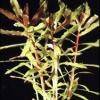 Ammania gracilis
Ammania gracilis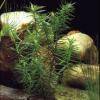 Didiplis diandra
Didiplis diandra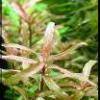 Nesaea crassicaulis
Nesaea crassicaulis Rotala indica
Rotala indica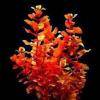 Rotala macrandra
Rotala macrandra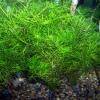 Rotala nanjenshan
Rotala nanjenshan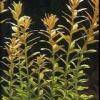 Rotala rotundifolia
Rotala rotundifolia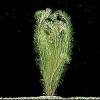 Rotala wallichii
Rotala wallichii